This article was medically reviewed by Sarah Gehrke, RN, MS. Sarah Gehrke is a Registered Nurse and Licensed Massage Therapist in Texas. Sarah has over 10 years of experience teaching and practicing phlebotomy and intravenous (IV) therapy using physical, psychological, and emotional support. She received her Massage Therapist License from the Amarillo Massage Therapy Institute in 2008 and a M.S. in Nursing from the University of Phoenix in 2013.
There are 11 references cited in this article, which can be found at the bottom of the page.
wikiHow marks an article as reader-approved once it receives enough positive feedback. This article received 47 testimonials and 100% of readers who voted found it helpful, earning it our reader-approved status.
This article has been viewed 2,587,441 times.
A hernia happens when an area of the muscle wall holding your internal organs in place becomes weakened. Once the weakened area becomes large enough, a part of the internal organ starts poking out. Fortunately, there are different ways to tell whether or not you have a hernia and if you do, what kind of hernia it is.
Steps
Taking a Look at the Different Kinds of Hernias
-
1Check for hernias that occur around the stomach, abdomen, or chest. A hernia can affect different areas of your body in different ways, although a hernia in or around the stomach area may be the most common type of hernia. These hernias include:
- Hiatal hernia affects the upper part of your stomach. The hiatus is an opening in the diaphragm that separates the chest area from the abdomen.[1] There are two types of hiatal hernia: sliding or paraesophageal. Hiatal hernias occur in people of both sexes, and are typically more common in people over the age of 50 and those who are obese.[2]
- Epigastric hernia occurs when small layers of fat push through the belly wall between your breast bone and your navel. You can have more than one of these at a time. Although epigastric hernias often present no symptoms, it may need to be treated with surgery.
- Incisional hernia happens when improper care after abdominal surgery results in bulging through the surgical scar.[3] Often, mesh lining is incorrectly installed and the intestines slip out of the mesh, causing a hernia.
- Umbilical hernia are especially common among infants. When the baby cries, a lump around the belly button area usually protrudes.[4]
-
2Know the types of hernias that affect the groin area. Hernias can also affect the groin, pelvis, or thighs when the intestines break out of their lining, causing uncomfortable and sometimes painful lumps in these areas.
- Inguinal hernia affects your groin area, and happens when a portion of the small intestine bulges through the abdominal lining.[5] Surgery is sometimes necessary for inguinal hernias, as complications can cause life-threatening situations.
- Femoral hernia affects the upper thigh, right below the groin. Although it may present no pain, it looks like a bulge in your upper thigh.[6] Femoral hernias are more common in women than in men.
- Anal hernia, or rectal prolapse, may cause the entire rectum to extend out of the anus, or may only push a part through. Anal hernias are rare and can affect anyone, but are more likely to be seen in older adults with a history of constipation or weak pelvic floors. They are often confused with hemorrhoids, but they are not the same thing.[7]
Advertisement -
3Understand the other types of hernias. Hernias can affect areas other than the stomach and groin region. In particular, the following hernias may present medical problems for individuals:
- Herniated discs happen when a disc in your spinal column pops out and begins to pinch a nerve.[8] The disks around the spinal column are shock absorbers, but can be dislodged either by injury or disease, resulting in a herniated disk.
- Intracranial hernias, or brain herniation, occur inside the head. They happen when brain tissue, fluid, and blood vessels are moved away from their usual position in the skull, often after a head injury, stroke or tumor.[9] Any brain herniation is a medical emergency and needs to be taken care of immediately.
Checking the Symptoms
-
1Investigate possible symptoms or signs of a hernia. Hernias may be caused by a host of different factors. Once they are formed, they may or may not present pain. Look for these symptoms, especially for hernias located in the abdominal or groin region:
- You see swelling where the pain is located. The swelling is usually on the surface of the areas such as the thigh, abdomen or groin.
- The swelling may or may not hurt.
- Bulges, such as those that you find in an inguinal hernia, can often be pushed back into your abdomen when you lie down. Bulges that cannot be pushed in when pressed down on need immediate medical attention.[10]
- You may notice pain that ranges from mild discomfort to severe pain. A common symptom of hernias is pain present when straining or doing a strenuous activity. If you experience pain during the following activities, you may have a hernia:
- Lift heavy objects.
- Cough or sneeze.
- Exercise or exert yourself.
- Hernia pain is often worse at the end of the day, or after long periods of standing.
-
2Check with a doctor to confirm a hernia. Some hernias are what doctors called "trapped" or "strangulated," meaning that the organ in question loses blood supply or blocks intestinal flow.[11] These hernias require immediate medical attention.
- Set up an appointment and meet with a doctor. Make sure to tell the doctor about all your symptoms.
- Undergo a physical examination. The doctor checks to see if the area increases in size when you're lifting, bending or coughing.
-
3Know what puts you at an increased risk for hernias. Why do hernias affect more than 5 million Americans? Hernias can happen for many reasons, including straining on the toilet, chronic constipation, heavy lifting, and smoking. Here are a few more of the factors that put people at an increased risk for hernias:[12]
- Genetic predisposition: If any of your parents had hernias, you are more likely to develop one.
- Age: The older you get, the higher your chance of getting a hernia.
- Pregnancy: While pregnant, the mother's stomach stretches out, making a hernia more likely.
- Sudden weight loss: People who suddenly lose weight are at increased risk of developing a hernia.
- Obesity: People who are overweight have higher chances of developing hernias compared to those who are not.
- Persistent cough: Coughing puts a lot of pressure and stress on the abdomen, and can lead to a hernia.
Expert Q&A
-
QuestionCan I get a hernia after having a herniated disc surgery years ago?
 Sarah Gehrke, RN, MSSarah Gehrke is a Registered Nurse and Licensed Massage Therapist in Texas. Sarah has over 10 years of experience teaching and practicing phlebotomy and intravenous (IV) therapy using physical, psychological, and emotional support. She received her Massage Therapist License from the Amarillo Massage Therapy Institute in 2008 and a M.S. in Nursing from the University of Phoenix in 2013.
Sarah Gehrke, RN, MSSarah Gehrke is a Registered Nurse and Licensed Massage Therapist in Texas. Sarah has over 10 years of experience teaching and practicing phlebotomy and intravenous (IV) therapy using physical, psychological, and emotional support. She received her Massage Therapist License from the Amarillo Massage Therapy Institute in 2008 and a M.S. in Nursing from the University of Phoenix in 2013.
Registered Nurse This depends on the type of surgery. For example, re-herniation of the disc doesn't occur after a total discectomy because the disc is completely removed. There are 23 discs in the spinal column, so if you are feeling back pain or sciatica you may have another disc starting to herniate.
This depends on the type of surgery. For example, re-herniation of the disc doesn't occur after a total discectomy because the disc is completely removed. There are 23 discs in the spinal column, so if you are feeling back pain or sciatica you may have another disc starting to herniate. -
QuestionCan a hernia go away and come back?
 Kirsten Kind, MDDr. Kind is a Family Medicine Physician specializing in pediatric radiology in Scotland. She received her MD from the University of Edinburgh Medical School in 2009. In 2017, she was elected as a Fellow of The Royal College of Radiologists.
Kirsten Kind, MDDr. Kind is a Family Medicine Physician specializing in pediatric radiology in Scotland. She received her MD from the University of Edinburgh Medical School in 2009. In 2017, she was elected as a Fellow of The Royal College of Radiologists.
Family Medicine Physician Yes. In fact, it's quite common for you to not feel the hernia all the time. They usually become more prominent when you strain or sit up.
Yes. In fact, it's quite common for you to not feel the hernia all the time. They usually become more prominent when you strain or sit up. -
QuestionIs it possible to get two groin hernias at once after lifting heavy weights?
 Kirsten Kind, MDDr. Kind is a Family Medicine Physician specializing in pediatric radiology in Scotland. She received her MD from the University of Edinburgh Medical School in 2009. In 2017, she was elected as a Fellow of The Royal College of Radiologists.
Kirsten Kind, MDDr. Kind is a Family Medicine Physician specializing in pediatric radiology in Scotland. She received her MD from the University of Edinburgh Medical School in 2009. In 2017, she was elected as a Fellow of The Royal College of Radiologists.
Family Medicine Physician Yes. Lifting a heavy weight can bring on a hernia in the groin, especially if you're not used to it. Getting two hernias at the same time is unusual, but still possible.
Yes. Lifting a heavy weight can bring on a hernia in the groin, especially if you're not used to it. Getting two hernias at the same time is unusual, but still possible.
Warnings
- Men should contact a physician if they are straining while urinating. It could be a symptom of a more serious medical problem such as an enlarged prostate.⧼thumbs_response⧽
- A hernia can become an emergency when the area starts strangling the tissue and cutting off the blood supply. Emergency surgery is required in this case.⧼thumbs_response⧽
References
- ↑ https://www.mayoclinic.org/diseases-conditions/hiatal-hernia/symptoms-causes/syc-20373379
- ↑ https://my.clevelandclinic.org/health/diseases/8098-hiatal-hernia
- ↑ http://www.ncbi.nlm.nih.gov/pmc/articles/PMC1963672/
- ↑ http://www.mayoclinic.org/diseases-conditions/umbilical-hernia/basics/definition/con-20025630
- ↑ https://www.mayoclinic.org/diseases-conditions/inguinal-hernia/symptoms-causes/syc-20351547
- ↑ http://www.nlm.nih.gov/medlineplus/ency/article/001136.htm
- ↑ https://my.clevelandclinic.org/health/diseases/14615-rectal-prolapse
- ↑ http://www.medicalnewstoday.com/articles/191979.php
- ↑ https://medlineplus.gov/ency/article/001421.htm
About This Article
If you feel pain when you lift heavy objects or exercise, check the area for swelling and bulges to see if you have a hernia. If you think it is a hernia, make an appointment with your doctor to get a physical examination and find out for sure. To learn more about common areas where you may get a hernia, keep reading!
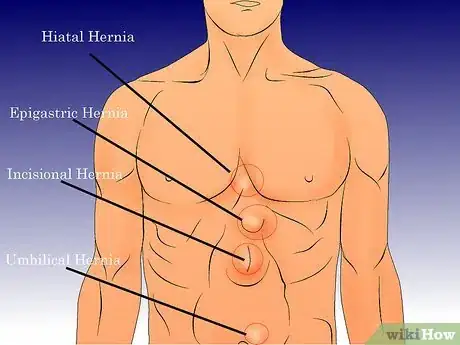
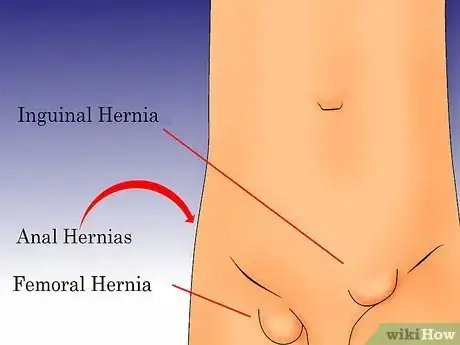
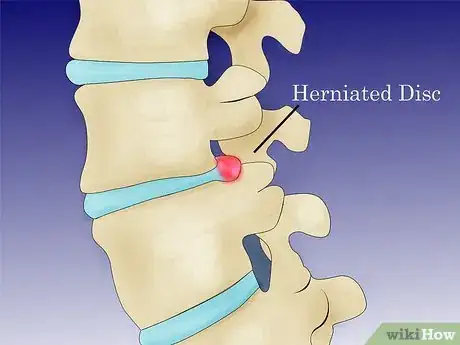

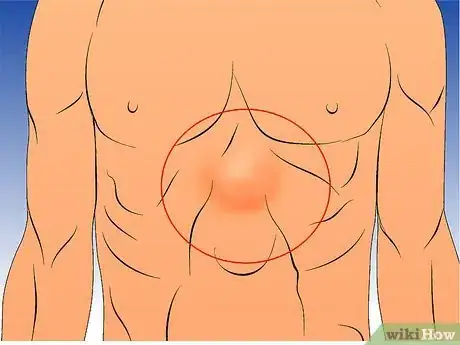
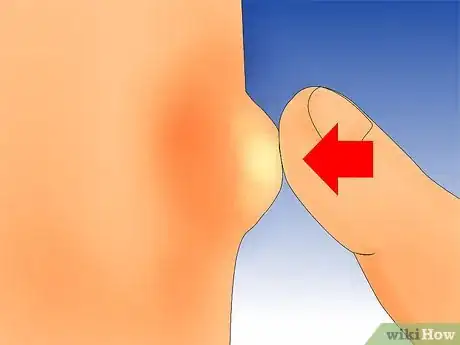
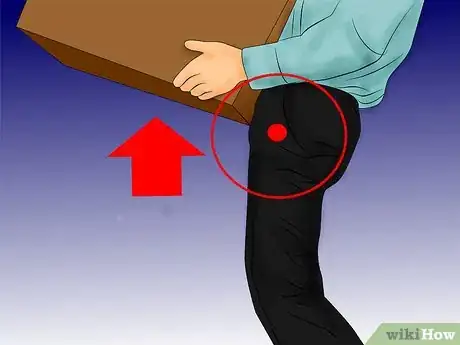
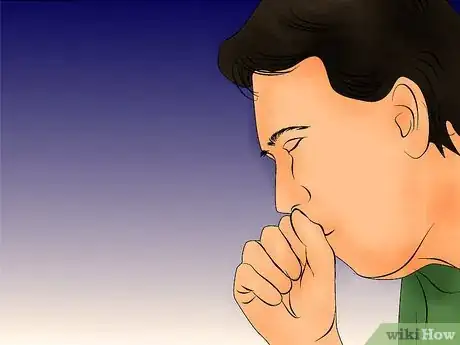
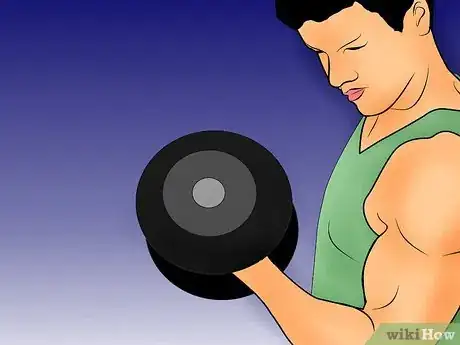
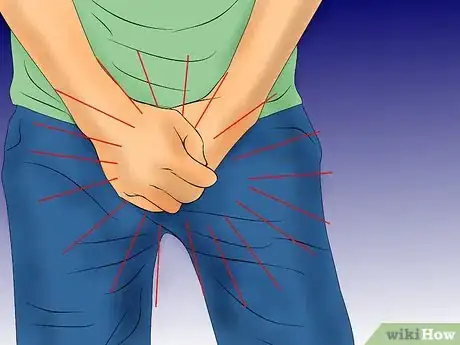
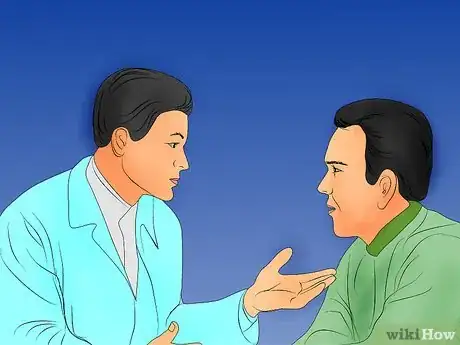
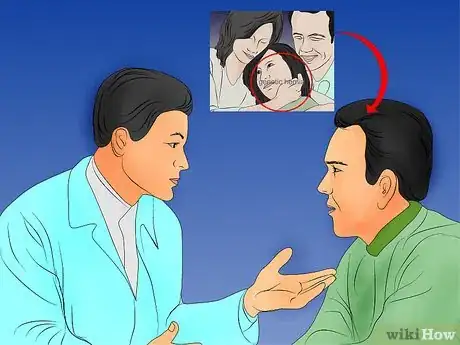

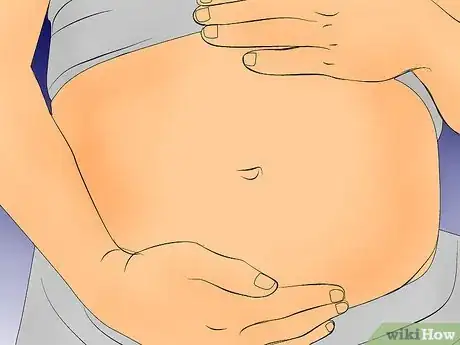
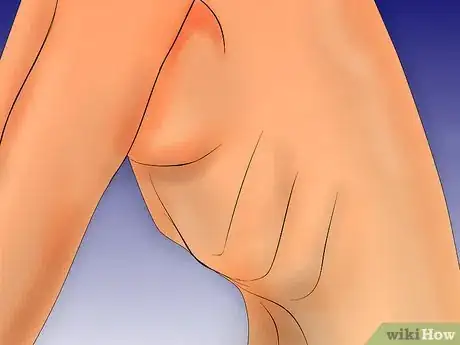
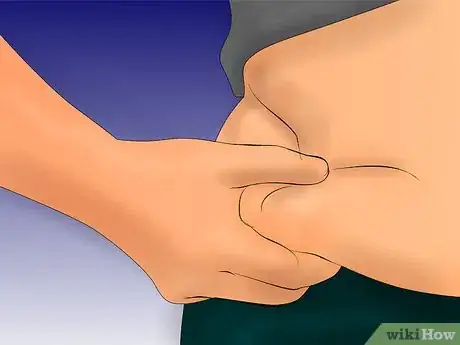
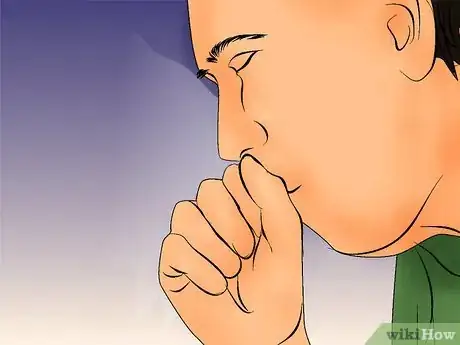

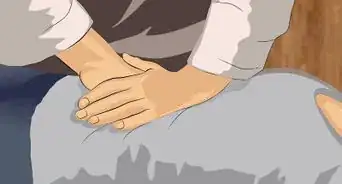



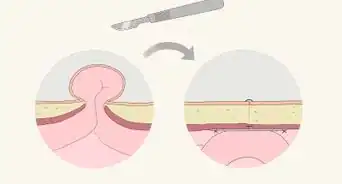

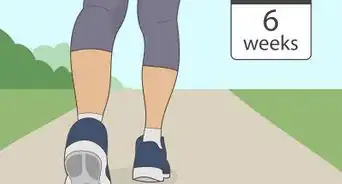


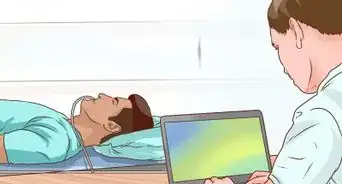












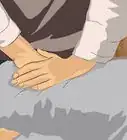






































Medical Disclaimer
The content of this article is not intended to be a substitute for professional medical advice, examination, diagnosis, or treatment. You should always contact your doctor or other qualified healthcare professional before starting, changing, or stopping any kind of health treatment.
Read More...